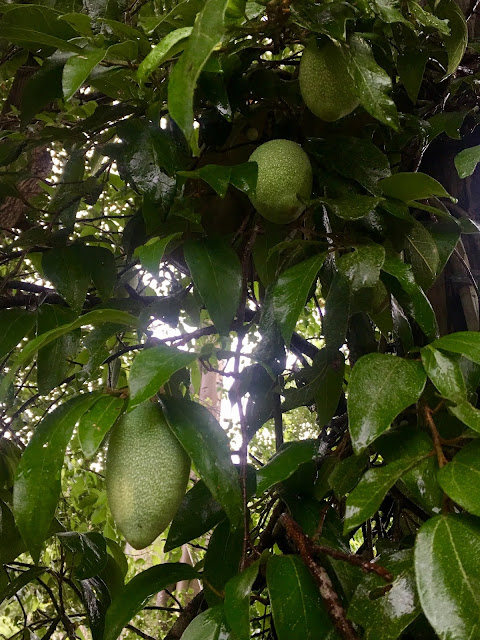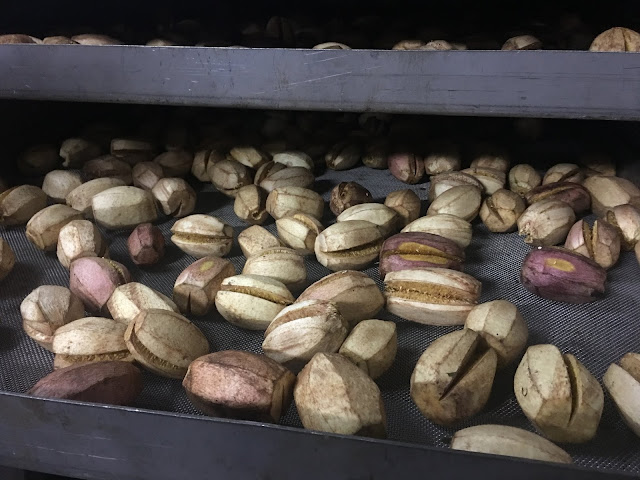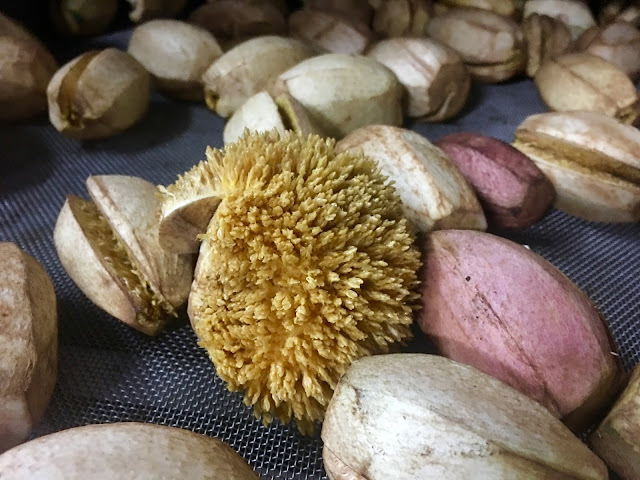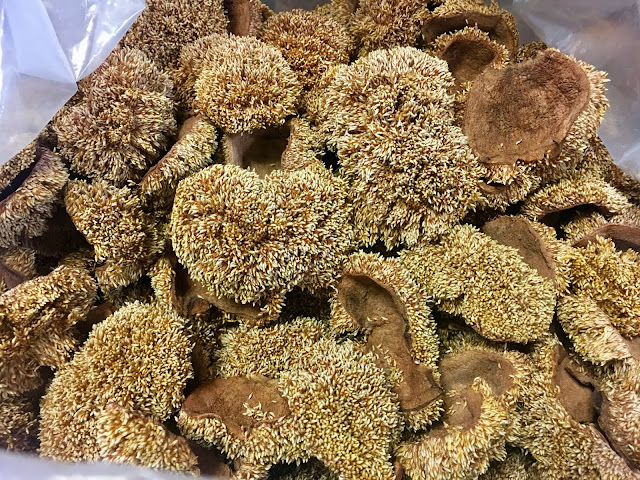Aiyu jelly (愛玉凍; àiyùdòng) is a jelly made from the gel extracted from the seeds of the awkeotsang creeping fig, which is found in Taiwan and other East Asian countries with similar climates. The jelly is not commonly made or found outside of Taiwan and Singapore, although it can be purchased fresh in specialty stores in Japan and canned in Chinatowns. Aiyu jelly is also used in Taiwanese cuisine and is popular in the historical town of Ipoh in Malaysia, known as Aiyu Jelly or "wan tau long" in the local Cantonese dialect.
Traditionally, aiyu jelly is served with honey and lemon juice. It can also be added to other sweetened beverages or shaved ice, making it a refreshing drink, particularly during hot summers. Due to the gel's resistance to dissolving in hot water, aiyu is sometimes used as an ingredient in hot pot dishes.
The gelling agent in aiyu seeds is pectin, which is found in the transparent layer on the surface of the seeds. To extract the pectin, the seeds are washed and rubbed rather than ground into a powder. The main component of the water extract is LMP (low methoxy pectin), as opposed to the high methoxy pectins found in commercially used sources such as apples or citrus peels. LMP gels in the presence of divalent cations, which are present in water (when it's not distilled), resulting in the formation of jelly.
The origin of Aiyu jelly
According to oral history, the plant and the jelly were named after the daughter of a Taiwanese tea businessman in the 1800s. The jelling property of the seeds was discovered by the businessman as he drank water from a creek in Chiayi. He noticed a clear yellowish jelly in the water and found it refreshing upon tasting it. When he looked above the creek, he saw fruits on hanging vines that contained seeds exuding a sticky gel when rubbed.
Impressed by the discovery, he collected some fruits and served them at home with honeyed lemon juice and sweetened beverages. The jelly-containing beverage became popular and was eventually sold by his 15-year-old daughter, Aiyu. As the snack gained popularity, the businessman named the jelly and the vines after his daughter. However, the Austronesian name "igos," derived from the Spanish word "higo," suggests a possible Austronesian origin for this food.
Harvesting and preparation of jelly
The fruits of the creeping fig (Ficus pumila var. awkeotsang) resemble large fig fruits about the size of small mangoes and are harvested from September to January, just before they ripen to a dark purple color. The fruits are halved and turned inside out to dry over several days.
To prepare the jelly, the aiyu seeds are placed in a cloth bag and submerged in water. The bag is then rubbed, extracting a slimy gel from the seeds. This process is known as "washing aiyu" in Chinese (洗愛玉). The washed gel is then left to set into a jelly in a cool location or in the refrigerator.










.jpg)

0 komentarze:
Post a Comment